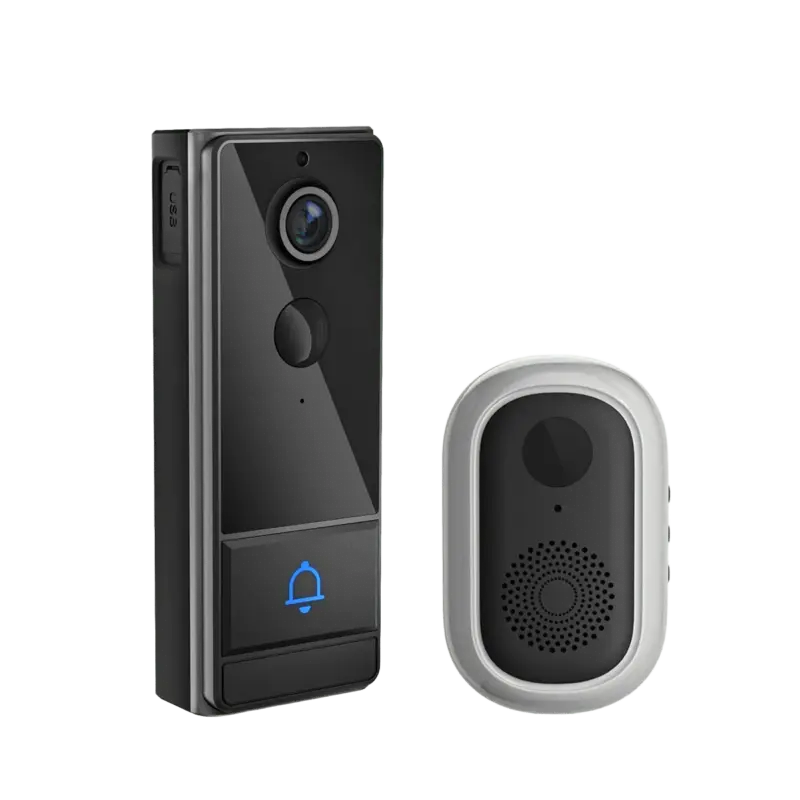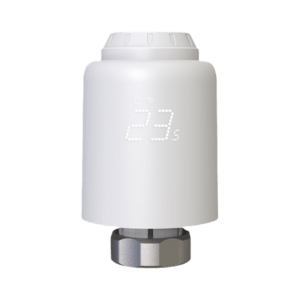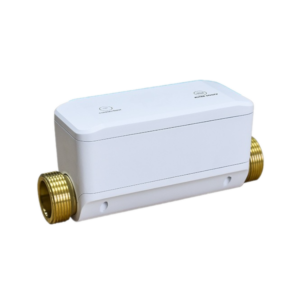If you’ve ever discovered a leak under kitchen sink, you know it’s more than a small inconvenience. One day you notice a puddle spreading across the cabinet floor; the next day everything looks perfectly dry. Sometimes the only clue is a musty smell, swollen wood, or an unexplained bump in your water bill.
This unpredictability makes a sink leaking underneath one of the most frustrating home maintenance problems. The good news? With the right knowledge, you can figure out where the leak is coming from, fix it yourself in many cases, and prevent it from coming back.
This guide will walk you through:
- Why even a tiny leak matters
- The most common causes of sink leaks
- Step-by-step DIY fixes
- How to troubleshoot an intermittent leak under sink
- What to do when there’s a sink leak with no visible water
- When to call a plumber
- Long-term prevention, including smart leak detectors and shutoff valves
Why a Leak Under the Sink Matters
A dripping faucet may look minor, but a leak under sink in kitchen cabinets can cause thousands of dollars in hidden damage.
- Cabinet damage – Wood, particle board, and laminate quickly soak up water. Over time, panels swell, warp, bubble, or crumble. You may even see peeling paint or sagging shelves.
- Mold growth – Dark, damp cabinets are perfect breeding grounds for mold and mildew. A mildew smell under the sink can make your whole kitchen feel like a basement and trigger allergies or asthma.
- Water waste – The EPA estimates a single faucet dripping once per second wastes over 3,000 gallons a year. A hidden intermittent leak under sink might waste even more because it runs unnoticed.
- Pests – Moisture attracts ants, cockroaches, and even rodents. For them, your leaky cabinet is the perfect watering hole.
- Insurance problems – The Insurance Information Institute warns that water damage is among the top causes of home insurance claims. But if your leak is considered “gradual damage” from neglect, your claim might be denied.
👉 According to the EPA WaterSense program, household leaks waste nearly a trillion gallons of water annually in the U.S.
In short: even a small leak under kitchen sink is worth addressing immediately.
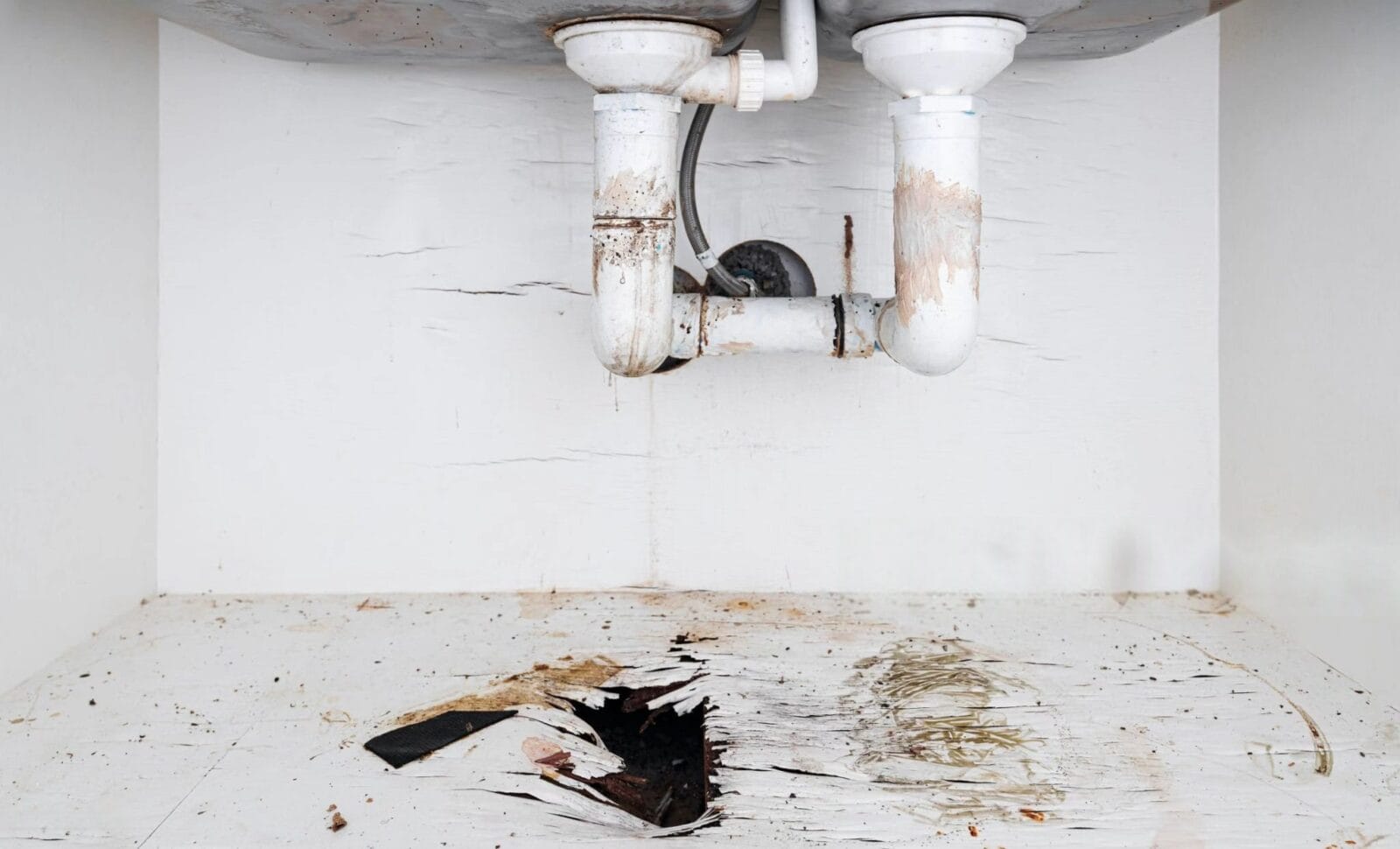
Common Causes of Sink Leaking Underneath
There are many possible culprits behind a sink leaking underneath. Let’s break them down with real-life examples.
- Loose or worn connections
- Slip-joint nuts and washers can loosen over time due to vibration.
- A loose P-trap is one of the most common reasons for a pipe under the sink is leaking.
- Faucet or sprayer hose issues
- A cracked pull-out sprayer hose may leak only when extended.
- If your kitchen sink sprayer hose is leaking under sink, you’ll often see water dripping only when you use the sprayer.
- Shutoff valve drips
- Corrosion or worn seals cause leaks near the valve stem.
- Sometimes these leaks only happen during pressure changes. Curious? Read more about what is a smart water valve.
- Dishwasher connections
- If you see a leak under sink after running dishwasher, chances are a loose clamp or cracked hose is to blame.
- Garbage disposal issues
- Vibrations can loosen seals, especially where the side inlet connects to the dishwasher drain.
- Cracks in the disposal housing itself will create leaks only during operation.
- Sink drain basket leaking
- The putty or gasket under the sink basket can fail, especially if old plumber’s putty dries out.
- Countertop seal failure
- Worn caulk or degraded plumber’s putty allows surface water to seep below.
- Pipe condensation
- In humid kitchens, cold water lines can “sweat.” This makes it look like a leak when it’s really condensation dripping off pipes.
How to Fix a Leak Under Kitchen Sink (Step-by-Step)
If you want to know how to fix a leak under kitchen sink, start with some basic tools:
- Adjustable pliers
- Basin wrench
- Teflon plumber’s tape
- Replacement washers/gaskets
- Plumber’s putty or silicone caulk
- Towels and a flashlight
Step 1: Identify the source
Dry everything with towels. Place paper towels under each joint, then run the faucet, sprayer, and dishwasher.
Step 2: Tighten slip nuts
Hand-tighten, then add a quarter turn with pliers.
Step 3: Replace washers or gaskets
If washers look cracked or flat, swap them for new ones (only a few dollars).
Step 4: Reseat the drain basket
Remove the basket, apply plumber’s putty, and reinstall.
Step 5: Repair faucet leaks
If water is coming from the faucet base, remove the faucet and replace the O-ring.
Step 6: Inspect shutoff valves
Tighten the packing nut; if the valve is corroded, replacement may be necessary.
Step 7: Check the disposal
If water leaks from the body of the garbage disposal, the unit may need replacement.
👉 Want a smarter fix? See our step-by-step guide to installing a smart shutoff valve.
Intermittent Leak Under Sink: Why It Comes and Goes
An intermittent leak under sink often confuses homeowners. Here’s why it may appear only sometimes:
- Dishwasher drains – Leaks occur only during a cycle.
- Full sink draining – When the sink is filled and released, pressure stresses weak seals.
- Sprayer hose flexing – The sprayer hose leaking under kitchen sink may only drip when the hose bends.
- Temperature changes – Hot water expands fittings; cold contracts them.
- Garbage disposal vibration – Can temporarily unseat gaskets.
📌 Tip: Keep a log of when leaks appear (time of day, appliance use, water temperature). This helps pinpoint the trigger.
Sink Leak With No Visible Water: Hidden Causes
A sink leak with no visible water is one of the trickiest problems. Common scenarios include:
- Water runs along the back wall of the cabinet before soaking in.
- Moisture evaporates before you see it.
- Countertop seals fail, allowing surface spills to seep down.
- Cold supply pipes sweat in humid weather, leaving condensation.
👉 If you smell mildew under sink but see no water, consider using a moisture meter or paper towel test to confirm hidden leaks.
DIY Tests to Find the Leak
Want to know how to find a leak under kitchen sink? Try these methods:
- Paper towel test – Place paper towels under P-trap, supply lines, and valves.
- Full sink drain test – Fill and release the sink all at once; check for drips.
- Food coloring test – Add dye to standing water; trace its path.
- Spray bottle test – Mist water around faucet base and countertop seals.
- Condensation check – Dry pipes, then run cold water for 5 minutes.
- Flashlight test – Shine a flashlight in the dark to spot glistening leaks.
💡 For budget alerts, consider a water immersion alarm. For smarter protection, our review of best smart water leak detectors 2025 compares Wi-Fi sensors and shutoff systems.
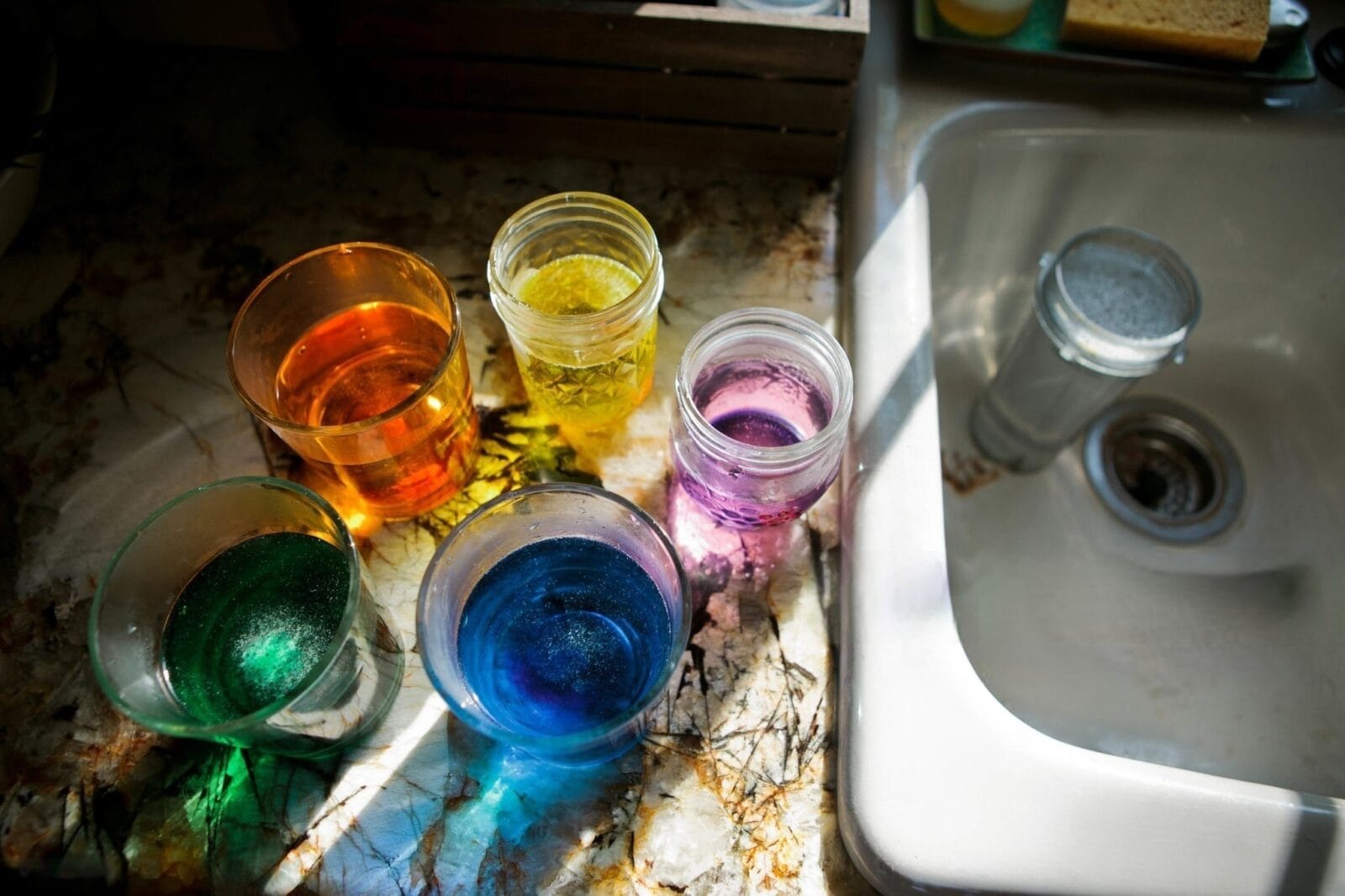
Repair Costs and When to Call a Plumber
DIY repairs often cost under $25 in parts. Professional repairs range from $120–$600 depending on complexity.
- P-trap replacement – $15–$40 parts + $120 labor
- Faucet hose – $20–$50 parts + $150 labor
- Shutoff valve – $30–$60 parts + $200 labor
- Cabinet damage repair – Hundreds or even thousands if ignored
👉 Call a plumber if leaks recur, pipes are corroded, or cabinets are swelling.
Prevention: Stop a Leak Under Kitchen Sink Before It Starts
Prevention is cheaper than cleanup. Here’s how to avoid the next leak under kitchen sink:
- Inspect monthly – Look for damp spots, warped wood, or mildew smells.
- Protective mats – Place waterproof mats under the sink.
- Replace supply lines – Rubber every 5–7 years; braided steel lasts longer but still needs checks.
- Install sensors – A Wi-Fi leak detector like AquaNet-BD sends alerts straight to your phone.
- Use a shutoff valve – A product like AquaNet-VM automatically cuts water when leaks are detected.
- Go all-in – A smart home water protection system links sensors and valves across your home.
Learn how smart shutoff valves and leak detectors work together to prevent water damage — from kitchen sink drips to whole-home emergencies.
Explore the Smart Water Protection Guide →Kitchen Maintenance Checklist
Monthly:
- Check under-sink cabinet for moisture or swelling.
- Wipe pipes dry and check for condensation.
Quarterly:
- Inspect dishwasher and sprayer hoses.
- Ensure shutoff valves turn easily.
Annually:
- Reseal faucet base and countertop.
- Replace aging hoses.
- Compare water bills for unexplained spikes.
FAQs
Why is my sink leaking underneath but pipes look fine?
Often the leak doesn’t come from the visible pipes. It may seep from the faucet base, countertop caulk, or sprayer hose, then run down behind pipes before soaking the cabinet floor.
What causes an intermittent leak under sink?
An intermittent leak under sink usually happens when something triggers pressure: a dishwasher draining, a sprayer hose flexing, or a full sink released at once.
Why do I smell mildew but don’t see water?
A sink leak with no visible water may evaporate quickly or seep into wood. Damp particle board can trap moisture inside. If odor persists, use a moisture sensor or call a plumber.
Is a small leak under kitchen sink dangerous?
Yes. Even slow drips rot wood, raise bills, and cause mold. Insurers may deny claims for gradual leaks, so treat any small leak seriously.
Can I use plumber’s tape to fix a sink leak?
Plumber’s tape works for threaded joints but won’t fix worn washers or cracked pipes. For most sinks leaking underneath, replacing gaskets or valves is the better long-term solution.
How much does it cost to repair a leak under sink?
DIY fixes like washers or caulk cost under $25. Professional help runs $120–$250 for simple repairs, and $400+ if valves or cabinets need replacement.
Why does my sink leak only after running dishwasher?
If a leak under sink happens after dishwasher runs, check the drain hose, side inlet, or clamp. These often loosen from vibration.
Why does my P-trap keep leaking?
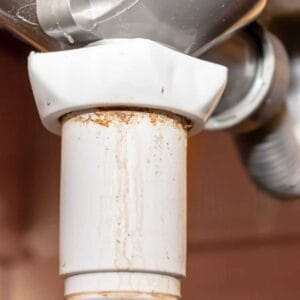
A loose slip nut or worn washer is the most common cause of a P-trap leak. Replace the washer and hand-tighten, then add a quarter turn with pliers.
How to stop a sprayer hose leaking under sink?
Replace the pull-out hose or O-ring. If water drips only when the sprayer is extended, it’s usually the hose jacket or connector wearing out.
Can condensation really look like a leak under sink?
Yes. In humid kitchens, cold supply pipes sweat, leaving puddles like a leak. Insulate the pipes or improve cabinet airflow to prevent damage.
What tools do I need to fix a leak under kitchen sink?
Basic tools include adjustable pliers, a basin wrench, plumber’s tape, replacement washers, and plumber’s putty. Towels and a flashlight make the job easier.
Final Thoughts
A leak under kitchen sink is never harmless. Whether steady, hidden, or intermittent, leaks damage cabinets, waste water, and raise bills.
By learning how to fix a leak under kitchen sink, running DIY tests, and installing preventive tools like sensors and a smart shutoff valve, you can protect your kitchen from costly repairs.
👉 Want whole-home peace of mind? Explore smart leak detection and automatic water shutoff and our full smart home water protection system.

